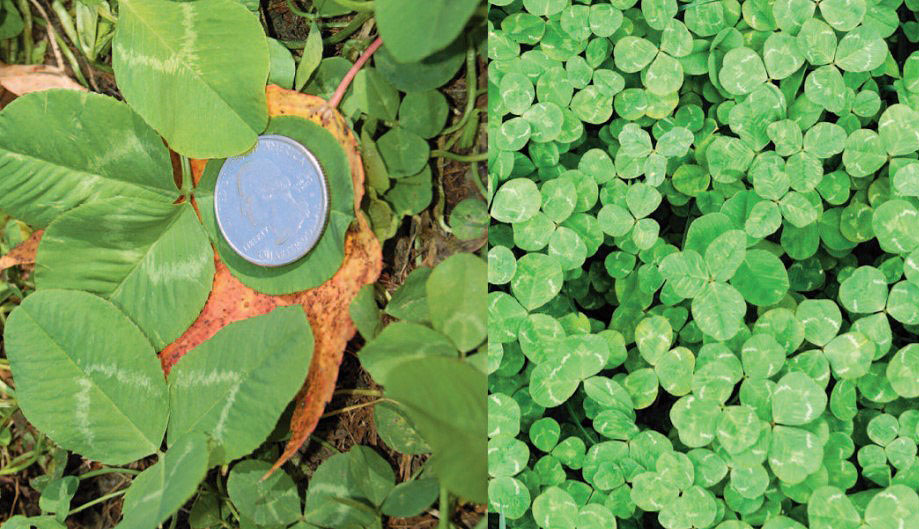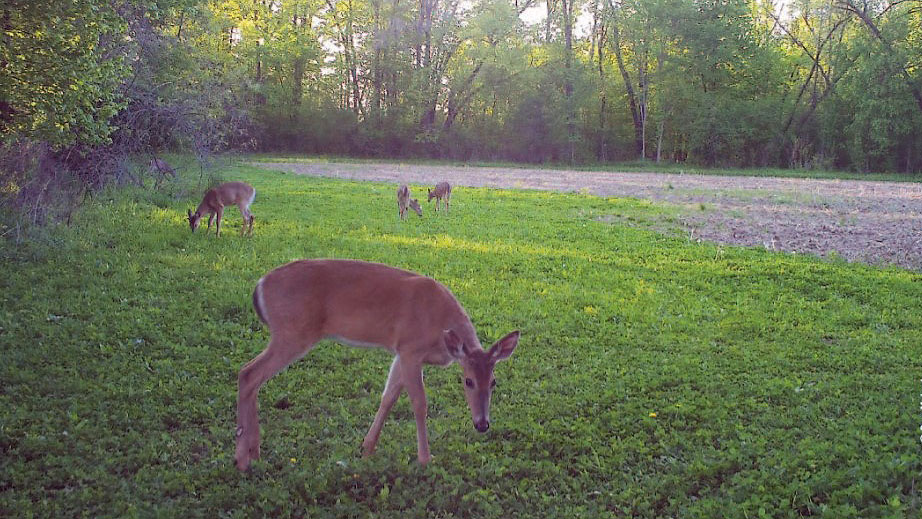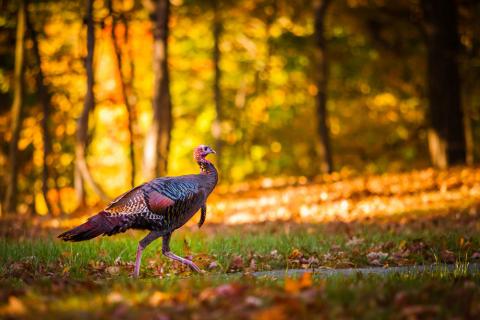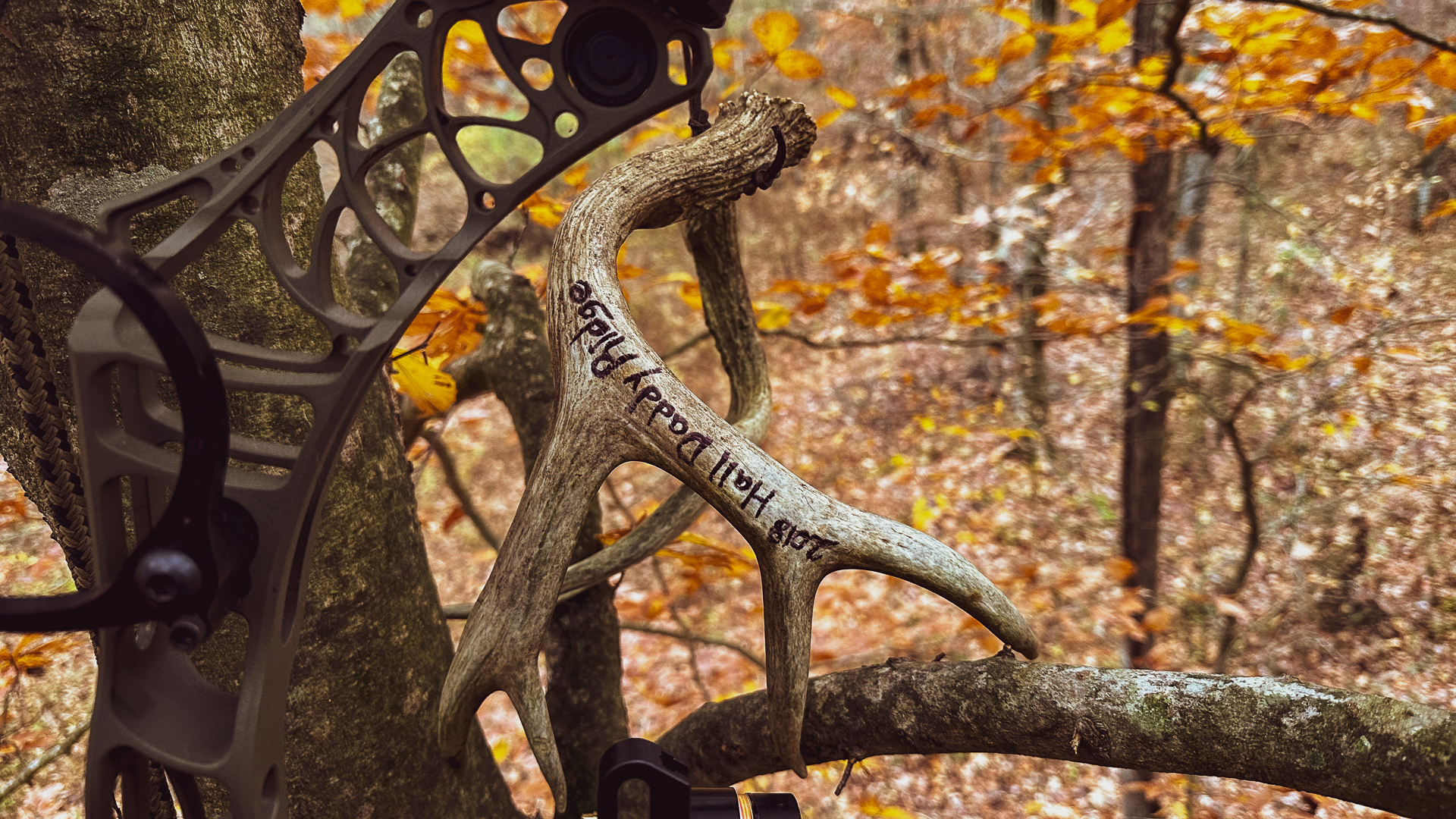Todd Amenrud | Originally published in GameKeepers: Farming for Wildlife Magazine. To subscribe, click here.

Ah spring! It’s all about regeneration and anew. You have a clean slate of annual plot locations to work with for the coming year, but how will they benefit your wildlife now? If you manage your property for whitetails, turkey or upland birds, whether your goal is attraction or nutrition, a perennial clover blend should be on your “food plot menu.” By the time any newly planted annuals become edible for your wildlife you would be missing out on two very important months of antler genesis and fawn rearing. Perennials, like clovers, are an important part of a nutrition program, but can also work as the best in early hunting season attraction.
Those in the south may have a difficult time to get these plants to truly be perennial for them - the cooler, humid growing season in the north favors these legumes. However, because of the big payoff some still plant perennial clovers and treat them as annuals, letting them die off during the hot, dry summer months and replant in the fall. Different varieties are chosen for a wide range of characteristics to meet specific management goals, but a “blend” of several clover varieties and possibly other perennials like alfalfa, trefoils or chicory is usually the best choice for most managers.
White clover is a perennial legume that can provide years of quality, high protein, extremely attractive forage for your whitetail herd and numerous other wildlife species. Red clovers tend to be a bit easier to grow in a wider range of conditions; however, they are typically not as attractive as most white varieties. As said, the best product for most food plot farmers will be a “blend.” With a blend you not only supply your herd a wider array of choices and provide an attractive option for longer than a single variety, but you also protect yourself against failure due to specific growing conditions unfavorable to one variety or another.
As it is when planting anything for whitetails, moisture is the key determinant for success when growing clover. As long as you receive 30 inches of rainfall annually you should be able to find perennials that will work for you. In drier or sandy areas adding deep-rooted perennials like alfalfa and chicory to the blend will help dramatically in stand survival.

We’ve had success in western states like Colorado, Wyoming, Nebraska and the Dakotas when planting perennials with selected annuals like brassicas and cereal grains. Blends like Premium Perennial or Perfect Plot are my favorites here. In CO and NE we’ve seen success in areas that receive as little as 12 inches annual rainfall. They are planted during the late summer to catch the fall rains. The annuals possibly help as a “nurse crop” to conserve moisture and provide excellent forage during the fall and into winter. Then, snow-melt brings the perennials back into production during the spring after winter dormancy for an excellent flush of nutritious forage until summer when hot, dry conditions often kill the crop. Even though they get much more rain in the south, this is somewhat how some perennials get used there, as well.
Throughout Canada, the northern tier of US states and many of the transitional states, clovers and other perennials can be planted during either spring or late summer. When planted during spring, chances are best for perennial survival, but some can experience weed problems. When planted during the late summer, the weed cycle may be easier on you, but you must make certain your perennials have 45 to 60 days of frost-free growth to establish a root system or they will not be recurrent and come back after dormancy.
When planted in soil which is initially close to a neutral pH and maintained properly, perennial clover blends can produce for six to eight years or more. In more acidic soils because of the need to incorporate lime when the soil reverts back to being too acidic, depending on your soil type and original pH you can expect more like three to five years from your crop and then you’ll need to work-in lime again.
When managed correctly, white clovers will spread by sending out a stem that grows horizontally along the ground surface called a stolon. The stolon will create nodes (a joint on a plant stem where a leaf attaches) where roots will form. This process creates new plants which will replace the original seedlings after a few years. So persistence is greatest in the varieties that create the most stolons, which tend to be the small-leaved white clovers.
Renewal from seed is also possible. If the plants are not browsed heavily or mowed often they will flower and produce seed. Regeneration from seed helps longevity in areas with dry summer conditions. Large-leaved types (like Non-Typical or Ladino) perform best when they are mowed less frequently, or when browsing pressure is limited and plants are allowed to mature. Still, mowing is important with these, especially during the cooler times of the growing season. On the other hand, the small-leaved types respond better to frequent browsing and/or mowing. Large-leaved varieties grow taller and stand upright more than the small-leaved types, but that does not mean better production.
Small-leaved varieties typically have thick stolons and strong roots. Large-leaved types have fewer stolons and usually don’t regenerate or persist as long as medium and small-leaved white clovers. Thus, large-leaved varieties are also more apt to be un-rooted by browse pressure.

Medium-leaved types (like White Dutch) are, as you’ve probably guessed, intermediate in features; these perform well under a wider range of situations. Constant browse pressure is tolerated best by the small-leaved types. As said, small-leaved types do not grow as tall as the larger-leaved clovers, but they have numerous small leaves and many stolons so they are an excellent choice for areas that receive heavy browse pressure. Given the different management necessities of the numerous varieties, before choosing which type of clover to plant, think about your growing conditions, your deer density in relation to the amount of acreage you will provide in clover and what you will be able to do for a maintenance routine (how often you will be able to mow, spray with herbicides, over-seed, etc.).
As an example, if you don’t have the resources to mow the plot frequently, especially during the spring when clover grows rapidly, or if the deer density is low in relation to the amount of acreage devoted, then a large-leaved form would be preferable.
On the other hand, if you have the ability to mow the stand frequently during the spring and/or the deer density is high relative to the amount of forage, then a small-leaved type of clover would be preferable. These small-leaved types of clover perform best when the stolons are exposed to sunlight – which encourages daughter plant production at the nodes. This response ensures the stand is thick and new plants are constantly being produced. This will help to ensure the stand remains productive for many years.

Again, for most people a “blend” of different varieties of both, red and white clover possibly combined with chicory and/or alfalfa will be the best selection. The specific growing/management conditions will bring the favorable cultivars to the forefront. One important consideration to note is that large-leaved clover doesn’t mean more tonnage per acre. The yield of most white clover types (large-leaved through to small-leaved) is comparable if each variety is cared for properly.
I suggest that your total perennial acreage be planted in stages so that it is not all the same age. If you replant, remember that it means the field will not provide a good source of food for almost an entire hunting season. Ground preparation and planting combined with waiting for germination and the time required to produce enough growth for deer requires so much time that replanting is equivalent to “closing the restaurant” and asking your “guests” to dine somewhere else. By planting in stages you never eliminate all of your perennials at once.
An attribute that can vary widely is how long the stand will persist and how much forage will be produced. Your site’s potential forage production is constrained by a combination of how much moisture the site receives, soil nutrients, and your ability to maintain the crop properly. I want the maximum leaf production possible considering the specific site’s limitations and how often I will be able to visit/work on the plot.

in less than full sun and will withstand a certain amount of
traffic.
Planting perennial clover is as easy as preparing a decent seedbed and broadcasting the seed at the appropriate rate. The seed should not be covered any more than ¼ of an inch. The ultimate would be if you could go over the broadcasted seed with a cultipacker or roller to ensure good seed-to-soil contact. Perennials should be planted in the spring in the north, in the spring or early summer midway throughout the country and during the early fall in the south. These planting times ensure the best survival for the crop since perennial clovers need 45-60 days to establish a root system so they will indeed be perennial for you and return after dormancy.
Maintaining perennial clover isn't as difficult as some think. To begin, for clover to do well it is important to neutralize any soil acidity. Soil pH has a big effect on the availability of nutrients to the plants. Aside from certain nutrients being bound in the soil so they aren’t available for the plants, in acidic soil (or low pH) some micronutrients can be present at levels toxic to clover. Legumes are particularly sensitive to acid soils. This means; do a soil test and incorporate the necessary lime to neutralize the acidity to bring your pH to 6.5 to 7.0.
On my property in Ontario near the Minnesota border, we have a pH that is naturally neutral. Every soil test I’ve ever done there has come back with a pH of 6.7 to 7.1. We have native white clovers that grow all over the property. I’m not sure of the variety of this native strain other than it seems to be a medium-leaved white. How do you get whitetails to your clover plots when there is clover everywhere? We get them to visit our plots by managing them properly - they love the tender shoots produced after mowing. However, clover just isn’t as big a draw there as it is just about everywhere else I’ve been. Where normally on my home property, 400 plus miles to the south, during September through midOctober I would choose to hunt Clover Plus over any other blend. In Ontario they prefer annuals (brassicas, soybeans and cereals) during that same time.
Choosing the proper fertilizer is also important. Clover can use both, atmospheric fixed nitrogen from its nodules and mineral nitrogen from synthetic sources. When fertilizing, use a blend with no nitrogen, for instance 300 to 350 pounds of 0-20-20 per acre (it is best to fertilize according to the results from a soil test). Legumes produce their own nitrogen, if you add nitrogen to legumes you encourage other grasses and unwanted weeds to take root and you “train” your clover to be lazy. If you give it nitrogen, it stops affixing its own. Fertilize your perennials at planting time and then again at least once per year after.
How often and how low you mow can greatly influence clover production. Frequent mowing during the spring favors white clover growth. Besides how often you mow, another aspect of white clover maintenance is how much of the plant’s height is removed during mowing. Some absentee landowners or people that simply don’t have the time; do not mow often enough - and when they do, tend to mow too short at the wrong time.
Infrequent mowing during the spring will allow the development of larger leaves. However, this results in less stolon production, fewer daughter plants and the loss of new growth. More frequent mowing, but not removing as much of the plant each time, will restrict total plant height, but enhances stolon survival and increases the stem density per acre. More frequent mowing typically equals a thicker, healthier stand that is more appealing to your herd.
You must also beware NOT to cut too much of the plants’ height otherwise you’ll leave a large swath of thick, dead, cut vegetation behind to shade out and kill your regenerating plants. Some, with large plots, or smaller equipment, actually choose to bale their clover just like they would cash-crop alfalfa. When specifically managing for wildlife this is probably not the best solution, for several reasons, but farmers who have an alfalfa field and want to make it more attractive to whitetails can over-seed clovers into their alfalfa stand and bale it right along with the rest of the crop.

simple because you only need to plant them once. Actually, for
perennials like this plot of Non-typical it takes more tractor time
than planting annuals twice per year.
During hot or dry conditions, white clovers should not be mowed frequently and in some cases should even be left un-mowed long enough to produce seed heads. On my home property in Minnesota I typically mow frequently in May, June and into early July and then I watch it closely and mow when I feel the crop can handle the stress. In July and August I also do not mow as short as I tend to in the spring and early summer. During the hot, dry months I use the “rule of thirds.” I never mow any more than 1/3 the height of the plants. With a perennial white clover blend, a good stand can be encouraged both, by frequent mowing during the spring to increase stolon production and survival, and no mowing during droughts or when the clover is growing slow to promote seed production.
As mentioned, another option is to mix chicory and/or alfalfa into your clover food plot plantings. These perennials have a deeper root system than clover and will provide quality forage during dryer conditions. Chicory, in particular, thrives during hot, dry weather. So during a dry period, when white clover should not be mowed, the chicory will stand erect and provide a highly nutritious food source.
The use of herbicides is also recommended to help keep the unwanted competition out of your perennial plots. I typically treat with a grass-specific herbicide one to three times during the growing season. Clethodim and sethoxydim are the two most popular active ingredients in most grass herbicides. I tend to favor the clethodim brands like Select, Arrest or Volunteer, but there are many other acceptable brands. Mowing tends to keep unwanted broadleaf weeds out of my plots, but there are also some options for herbicides to treat broadleaf weeds.
One last detail that I suggest is to over-seed your perennial plots every other spring. I typically over-seed at a rate of about ¼ of what I would do if I were originally planting the plot. This helps fill in gopher mounds, wheel ruts, spots where mowed leaves have covered up and killed some of the plants and bare spots. It also adds new, young seedlings to the plot. BioLogic usually claims three to five years growth on our perennials but I have plots that are going on eight and nine years that look every bit as good as they did in their second and third year. If you follow these steps you will also get longevity out of your perennial plots.































